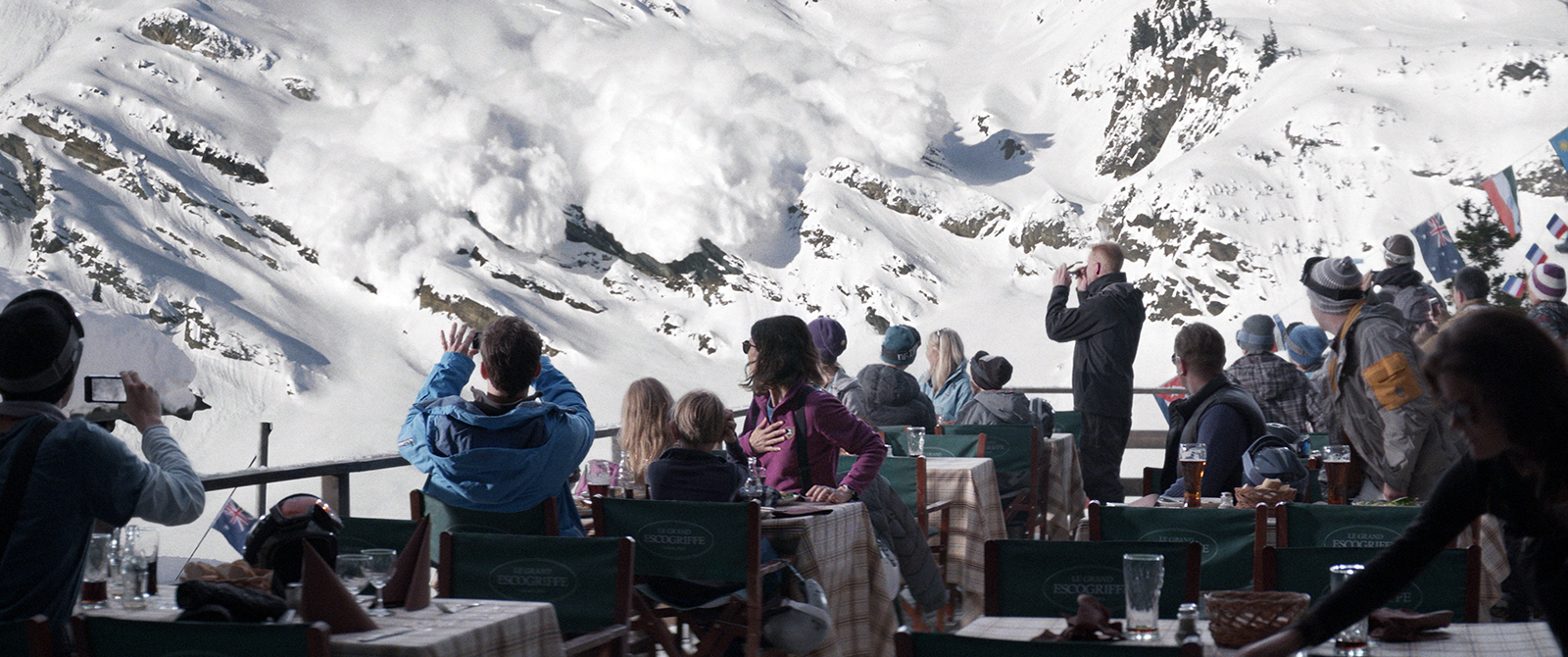Movie Review: ‘Force Majeure’

(Magnolia Pictures)
By Sebastian Torrelio
Oct. 31, 2014 12:35 a.m.
There is a primal instinct that’s generally truer than the traditional fight-or-flight responses: panic. Unbridled, terrified panic. It usually manifests as screaming or, internally, a mind-numbing sense of lingering dread.
That’s almost what “Force Majeure” is like – both in plot and experience. “Force Majeure” is an unconventional disaster movie, never letting its audience members get comfortable in their seats.
For within his deeply profound script, writer and director Ruben Östlund makes a case study out of both his film’s subjects and the audience. How exasperatingly scathing can a vacationing bourgeois family be? What about those around them? Their viewers?
Each starkly composed shot of “Force Majeure” critically views self-worth and love, letting chaos and catastrophe destroy the order the characters think they have laid out for them. This destruction revolves around one particularly brutal scene about a third of the way through the movie – it’s brutal because of shock value and hard to describe without ruining its impact.
But it isn’t the only brutal scene of “Force Majeure,” a movie filled to the brim with tension as well as beauty. Set at a gorgeous Alpine ski resort, the film does an impressive job taking in the white fluff and exuberant brightness of the natural landscape.
Even more impressive, though, is how he conducts the unnatural forces at play. The resort in charge of the mountainside constantly fires booming jets to set off controlled avalanches on the slopes. This keeps the slopes tidy and well manicured, but at the expense of an enormous dissonance in the otherwise placid environment.
Östlund runs stealthily with this idea of “controlled avalanches,” an oxymoronic term that could describe both the film’s main conflict as well as the film as a whole. Said “controlled avalanche” is the fault of Tomas (Johannes Kuhnke) and Ebba (Lisa Loven Kongsli), a married father and mother of two kids (Clara and Vincent Wettergren), who try their best to enjoy time away from the struggles of the world.
Those struggles are left unclear – the four make up a picture-perfect Scandinavian family. In fact, that’s even how Östlund starts off, with a scene of them posing for a ski resort photographer. There’s no reason to think they aren’t perfect; they even sleep in matching pajamas. No, the problems with Tomas and Ebba, just like the problems with their blissful ski resort, lie underneath.
Those problems turn into “controlled avalanches” subtly, though effectively quickly. The boom is Ebba teasing Tomas, lightly and playfully at first. It builds when they meet another couple (Kristofer Hivju and Fanni Metelius) who gets caught in the middle of the storm and ends up helplessly fueling it along.
And like an avalanche, “Force Majeure” doesn’t relieve itself. There are several climaxes, each as insufferably gripping as the last, but no meritable conclusions to wrap it up tightly. This may be one of the only things separating Östlund from a director like Michael Haneke, who similarly likes spiraling things out of control from the onset of one finely tuned moment.
Compared to Haneke’s films, “Force Majeure” could do more in the way of studying what’s to come on its path of impending madness, though the path that’s depicted on screen is fascinating enough, ripe with black comedy and steadily maneuvered transitions. “Force Majeure” won’t necessarily make audience members ask for more, but it will have them asking “Why?” and, more promptly, “Should we ever go skiing again?”
– Sebastian Torrelio


